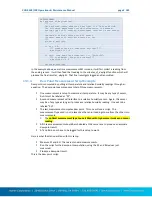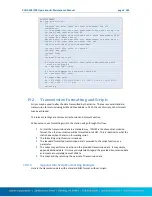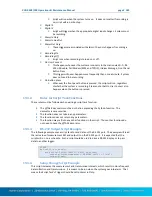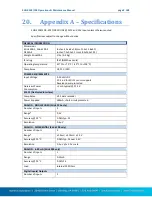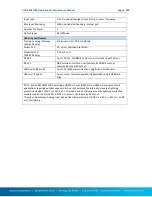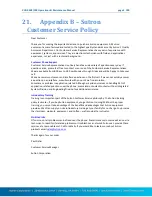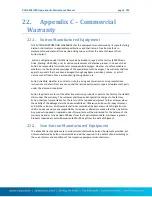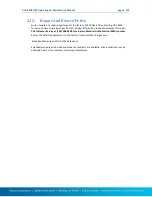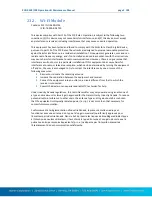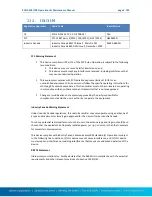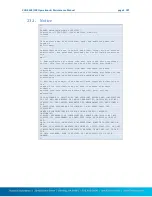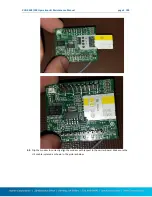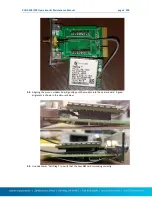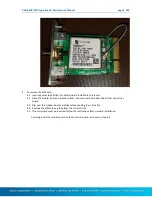
XLINK 500/100 Operations & Maintenance Manual page # 196
23.4.
Cellular Compliance Information
Cellular Version
Description
Radio
FCC ID
IC ID
CELLULAR-MOD-1
Verizon LTE modem
NL-SW-LTE-TSVG
RI7LE910SV
5131A-LE910SV
CELLULAR-MOD-5
HSPA+ Global
NL-SW-HSPA
RI7HE910
5131A-HE910
The cellular option card can be found in the option card slot. To remove the modem card,
unscrew the 2 screws and pull on the SMA connector. The FCC ID is located on the modem serial
label on the back side.
CAN ICES-3 (B) / NMB-3 (B)
This Class B digital apparatus complies with Canadian ICES-003.
FCC Warning Statement
This device complies with Part 15 of the FCC Rules and Industry Canada licence-exempt RSS
standard(s). Operation is subject to the following two conditions:
3.
This device may not cause interference, and
4.
This device must accept any interference, including interference that may
cause undesired operation of the device.
This equipment complies with FCC and IC radiation exposure limits set forth for an uncontrolled
environment. The antenna should be installed and operated with minimum distance of 20 cm
between the radiator and your body. Antenna gain must be below:
700 MHz 6.93 dBi
1700 MHz 5.00 dBi
This transmitter must not be co-located or operating in conjunction with any other antenna or
Transmitter that is not preapproved.
FCC Class B digital device notice
This equipment has been tested and found to comply with the limits for a Class B digital device,
pursuant to part 15 of the FCC Rules. These limits are designed to provide reasonable protection
against harmful interference in a residential installation. This equipment generates, uses and can
radiate radio frequency energy and, if not installed and used in accordance with the instructions,
may cause harmful interference to radio communications. However, there is no guarantee that
interference will not occur in a particular installation. If this equipment does cause harmful
interference to radio or television reception, which can be determined by turning the equipment
off and on, the user is encouraged to try to correct the interference by one or more of the
following measures:
Reorient or relocate the receiving antenna.
Increase the separation between the equipment and receiver.
Connect the equipment into an outlet on a circuit different from that to which the
receiver is connected.
Consult the dealer or an experienced radio/TV technician for help.

